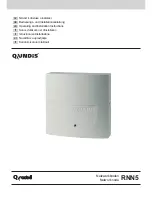
www.ti.com
B.3
Read Performance
Read Performance
Since reads must complete a transmit-remote read-receive cycle before starting another read transaction,
the data throughput is lower as compared to writes. There is latency involved in reading the data from the
remote device; and in some cases, a local latency in writing the returned data before the next read can
start.
The max read rate is calculated the same way as the max write rate. The packet overhead is as shown
below:
Read32 - caaaaT
ReadBurst - claaaaT
ReadReturn - clddddddddT
Where
T - EndOfPacket
d - data, dddd represents additional 32-bit words in burst, up to 16 words.
a - address
c - command
l
- length
There are 6 bytes of overhead for a single read, 7 bytes for burst reads, and 3 bytes for read returns. The
time required for a read is the total of the time for the read request, remote latency, read return, and local
latency. Thus, the throughput can be calculated as data bytes/total transaction time, where the latency of
both local and remote devices is combined.
Read Throughput = data/ (((Read + Read data)/max read rate) + Latency
= (data
×
max read rate)/((Read + Read data) + Latency
×
max
read rate)
For example, with a 4 pin, 99 MHZ VLYNQ connection, for a single 32-bit word read:
Read Throughput = 32 bits
×
316.8 Mbps/ (6
×
8 + 3
×
8 + 4
×
8 + Latency
×
316.8Mbps)
= 10137.6/(104 + Latency
×
316.8 Mbps)
Similarly, for a burst read of sixteen 32-bit words, with a 4 pin, 99 MHZ VLYNQ connection
Read Throughput = 16
×
32 bits
×
316.8Mbps/(6
×
8 + 3
×
8 + 16
×
4
×
8 + Latency
×
316.8Mbps)
= 162201.6/(584 + Latency
×
316.8Mbps)
Using the formula above, the relative performance with various latencies is illustrated for a 4 pin, 99 MHZ
VLYNQ clock, burst read (sixteen 32-bit words) throughput rate, as shown in
Table B-3
.
Table B-3. Relative Performance with Various Latencies
Throughput
Number of VLYNQ
Burst Size in
Pins (99 MHZ)
32-bit Words
Latency (
μ
sec)
Mbits/sec
Mbytes/sec
4
16
0
277.74
34.72
1
179.70
22.46
10
43.02
5.38
100
5.00
0.62
To efficiently use VLYNQ bandwidth, it is desirable for each VLYNQ device to write from the local device
to the remote device. Burst transactions are more efficient than single read/write transactions.
46
Write/Read Performance
SPRU938B – September 2007
Submit Documentation Feedback



































